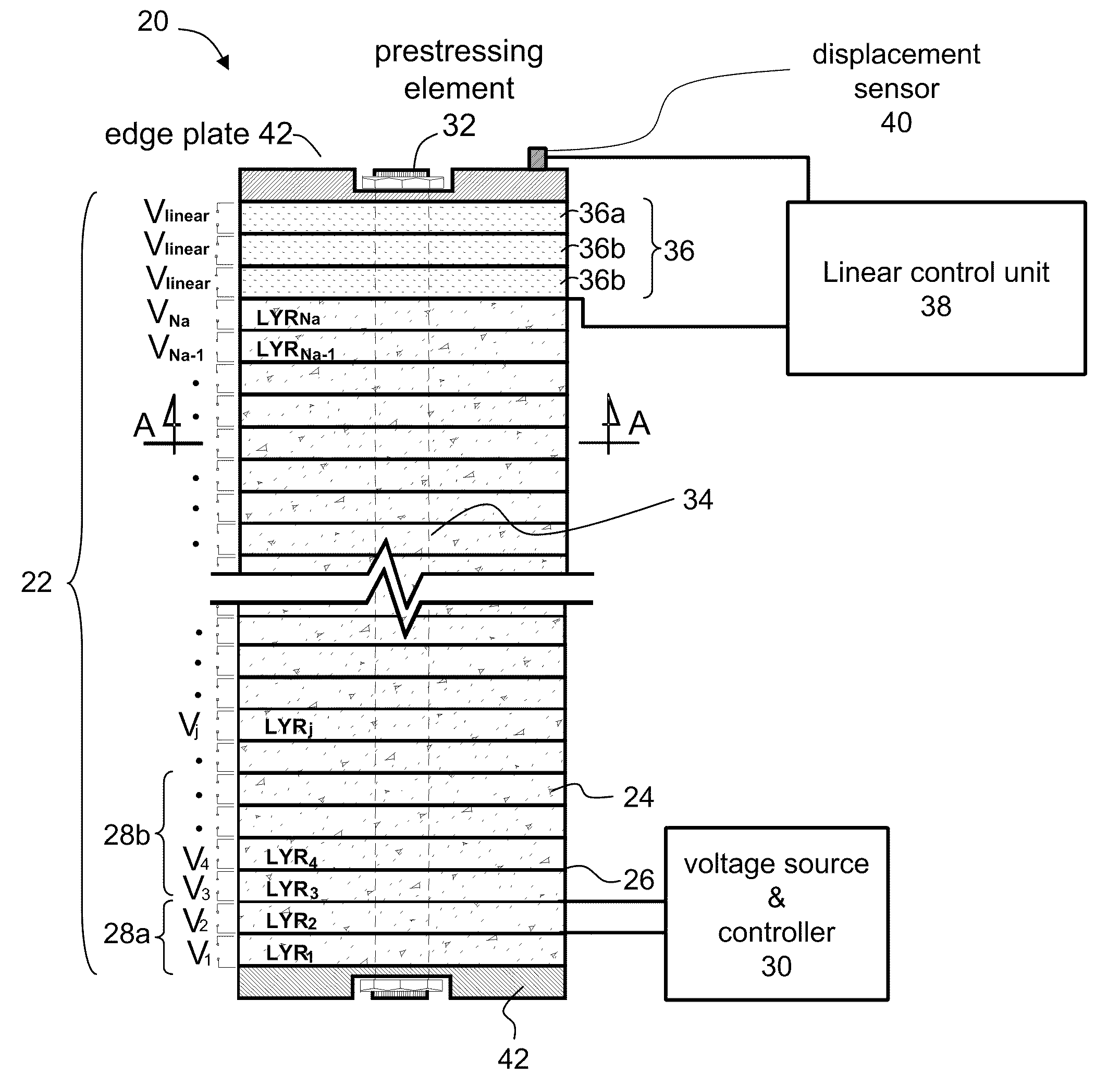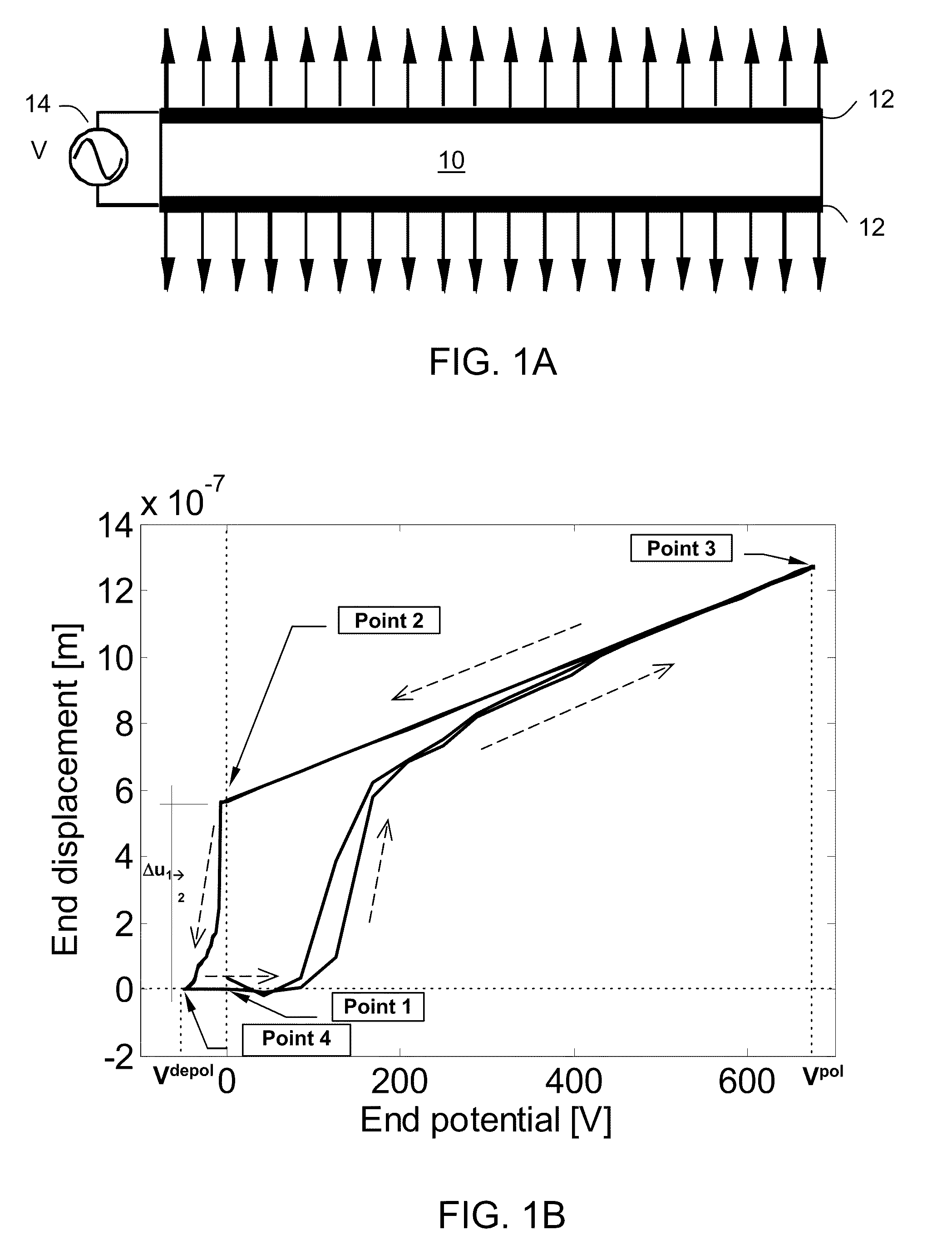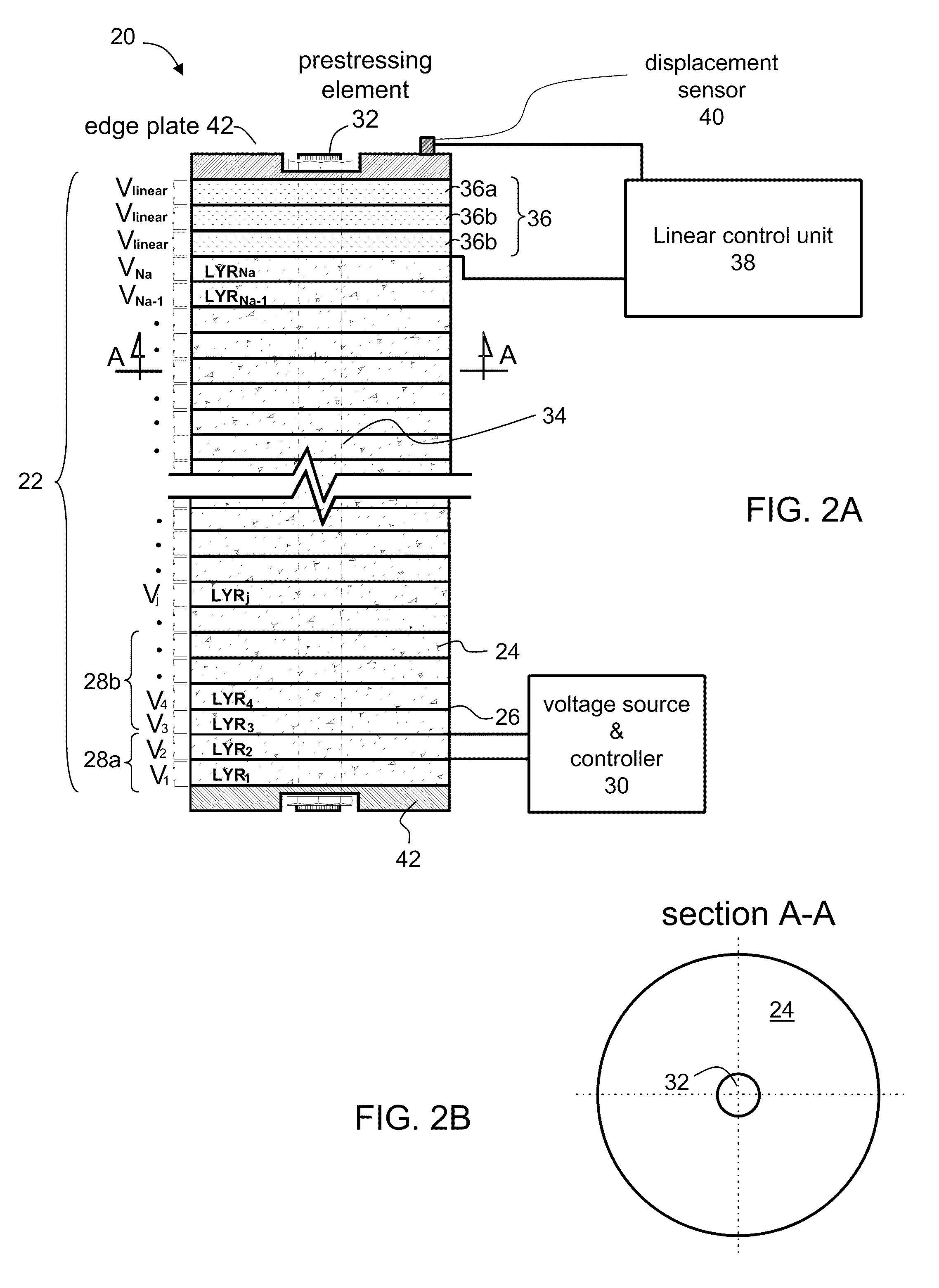Piezoelectric-ferroelectric actuator device
a technology of piezoelectric actuators and actuators, applied in piezoelectric/electrostrictive/magnetostrictive devices, piezoelectric/electrostriction/magnetostriction machines, electrical apparatus, etc., can solve the problems of nonlinear complex elation, non-monotonic and hysteretic, and traditional actuation devices do not operate in this rang
- Summary
- Abstract
- Description
- Claims
- Application Information
AI Technical Summary
Benefits of technology
Problems solved by technology
Method used
Image
Examples
example 1
Exemplified Operation Scheme
[0129]The present example describes a method which can be used according to some embodiments of the present invention for determining an operation scheme of the actuator device. The operation scheme can include the voltage applied to each layer or group of layers (e.g., sub-stacks) such that the overall displacement at the tip of the actuator is u3d.
[0130]The method begins by determining the optimal domain state of each layer or sub-stack, and assigning for each layer or sub-stack a working point which corresponds to a domain state. In the present example, the working points correspond to a depoled domain state with zero applied voltage and a fully polarized domain state with zero applied voltage (see, e.g., Points 1 and 2 of FIG. 1B). These working points are referred to hereinunder as working point 1 and working point 2, respectively.
[0131]Once the working points are assigned, the method determine, for each layer or sub-stack which is assigned with a wo...
example 2
Numerical Study
[0142]In the present example, the method described in Example 1 was employed to study the operation of an actuator device according to some embodiments of the present invention. The properties and components of the actuator device studied in this example are summarized in Table 1, below:
TABLE 1PropertySymbolValueNumber of individually controlled activeNa400layersNumber of layers in the linear partNLin 3Depoled layer thicknessl0.25[mm]Radius of the actuatorR20[mm]Radius of the rubber pre-stressingr2.167[mm]elementElastic modulus of an active layer at[C3333]134[GPa]working point 1Elastic modulus of an active layer at[C3333]234[GPa]working point 2Axial piezoelectric constant of the lineard333−1.049 * 10−6[mm / V]segmentLayer thickness change when switchingΔu1→25.3996E * 10−4[mm]from point 1 to 2Pre-stressing element's elastic modulusEps2800[MPa]Prestressing forceΛ33019872[N]Prestressing stressΛ330 / πr216[MPa]Spring Constant of the pre-stressing elementKp=πr2Eps(Na+NLin)l410...
case 1
Electrical Actuation
[0187]The first numerical example studies the active layer shown in FIGS. 8A-B, with λ3=0 and Λ33=0 (i.e. electrical load only). The non-linear response of the actuator, the response to the high-level electrical load (±1.5 [kV]) predicted by the linear theory, and the response to the low-level electrical load within the linear range (±0.25 [kV]) predicted by the nonlinear theory appear in FIGS. 9A-D. FIGS. 9A and 9B show that the displacement range observed under voltage applied in the nonlinear regime is about 4 times larger than the displacements under a voltage difference in the linear operational range. This is a notable improvement of the actuation capabilities. FIGS. 9A-D also show that the prediction of the linear theory is fundamentally different from the actual nonlinear response. At some instances, the linear theory fails to predict the magnitude and the sign of the response. It should be noted, however, that the linear range of operation can be extende...
PUM
 Login to View More
Login to View More Abstract
Description
Claims
Application Information
 Login to View More
Login to View More - R&D
- Intellectual Property
- Life Sciences
- Materials
- Tech Scout
- Unparalleled Data Quality
- Higher Quality Content
- 60% Fewer Hallucinations
Browse by: Latest US Patents, China's latest patents, Technical Efficacy Thesaurus, Application Domain, Technology Topic, Popular Technical Reports.
© 2025 PatSnap. All rights reserved.Legal|Privacy policy|Modern Slavery Act Transparency Statement|Sitemap|About US| Contact US: help@patsnap.com



